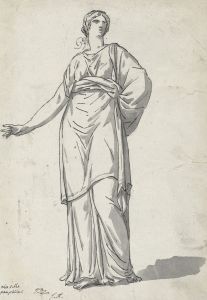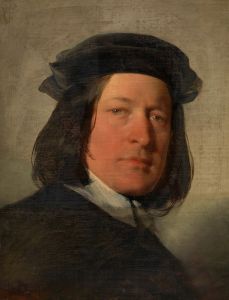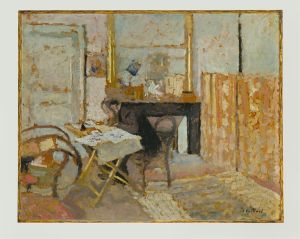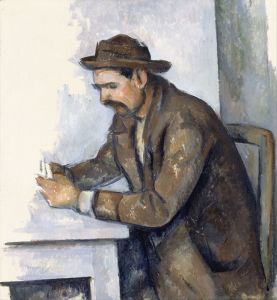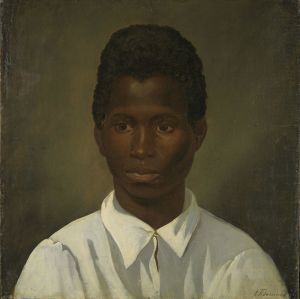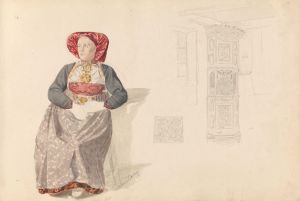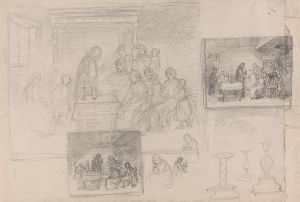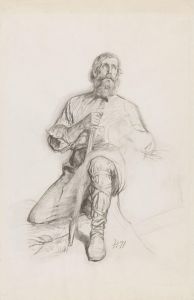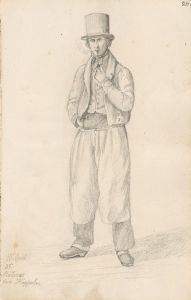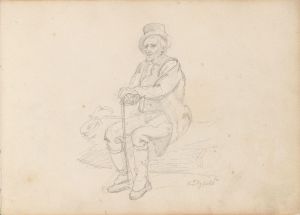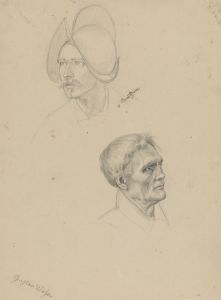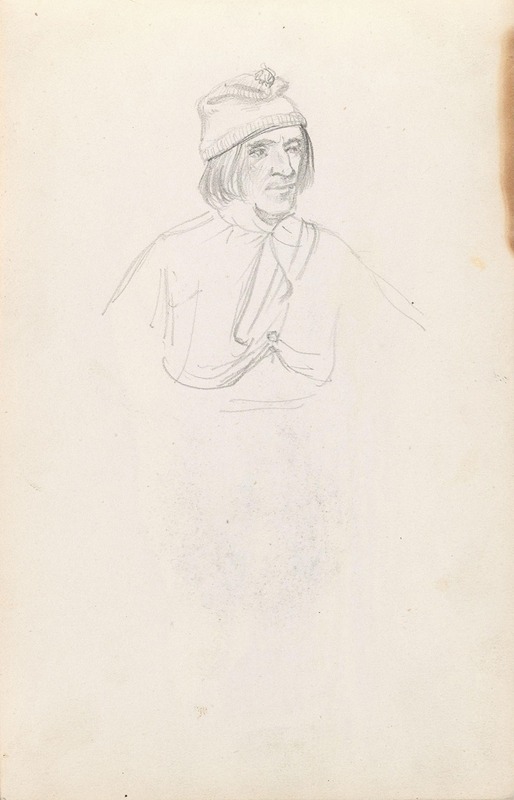
Mannsportrett
A hand-painted replica of Adolph Tidemand’s masterpiece Mannsportrett, meticulously crafted by professional artists to capture the true essence of the original. Each piece is created with museum-quality canvas and rare mineral pigments, carefully painted by experienced artists with delicate brushstrokes and rich, layered colors to perfectly recreate the texture of the original artwork. Unlike machine-printed reproductions, this hand-painted version brings the painting to life, infused with the artist’s emotions and skill in every stroke. Whether for personal collection or home decoration, it instantly elevates the artistic atmosphere of any space.
Adolph Tidemand was a prominent Norwegian painter in the 19th century, known for his detailed and realistic depictions of Norwegian folk life and culture. One of his works, "Mannsportrett," is a portrait that exemplifies his skill in capturing the essence of his subjects with precision and depth. Although specific details about "Mannsportrett" are limited, Tidemand's broader body of work provides context for understanding his artistic approach and significance.
Adolph Tidemand was born on August 14, 1814, in Mandal, Norway. He studied art at the Academy of Fine Arts in Copenhagen and later at the Kunstakademie Düsseldorf, which was a hub for many artists during that period. The Düsseldorf school of painting, known for its detailed and realistic style, greatly influenced Tidemand's work. He became one of the leading figures in this movement, and his paintings often reflect a deep interest in Norwegian history, folklore, and rural life.
Tidemand's portraits are particularly noted for their attention to detail and the ability to convey the personality and social status of the sitter. While specific information about "Mannsportrett" is scarce, it can be inferred that, like his other portraits, it likely showcases his meticulous technique and his interest in the human condition. His portraits often feature individuals in traditional Norwegian attire, set against simple backgrounds that emphasize the subject's features and expressions.
Throughout his career, Tidemand traveled extensively throughout Norway, gathering inspiration from the country's landscapes and people. His travels informed his work, allowing him to create authentic and relatable depictions of Norwegian life. This dedication to authenticity is evident in his portraits, where he captures not just the physical likeness of his subjects but also their cultural and social contexts.
Tidemand's work gained significant recognition during his lifetime. He exhibited widely, including at the prestigious Salon in Paris, and received numerous accolades for his contributions to art. His paintings were celebrated for their narrative quality and their ability to evoke a sense of national identity and pride among Norwegians. Tidemand's influence extended beyond Norway, as his works were also appreciated in other parts of Europe.
In addition to his portraits, Tidemand is well-known for his genre paintings, which depict scenes from everyday life in rural Norway. These works often feature themes of family, community, and tradition, reflecting the values and customs of Norwegian society in the 19th century. His collaboration with fellow artist Hans Gude on the painting "Bridal Procession on the Hardangerfjord" is one of his most famous works, highlighting his ability to blend portraiture with landscape painting.
Adolph Tidemand passed away on August 25, 1876, in Christiania (now Oslo), Norway. His legacy continues to be celebrated in Norway and beyond, as his paintings remain an important part of the country's cultural heritage. While specific details about "Mannsportrett" are limited, Tidemand's overall contribution to art provides a rich context for appreciating his work. His portraits, including "Mannsportrett," are a testament to his skill in capturing the human spirit and his dedication to portraying the cultural identity of his homeland.





